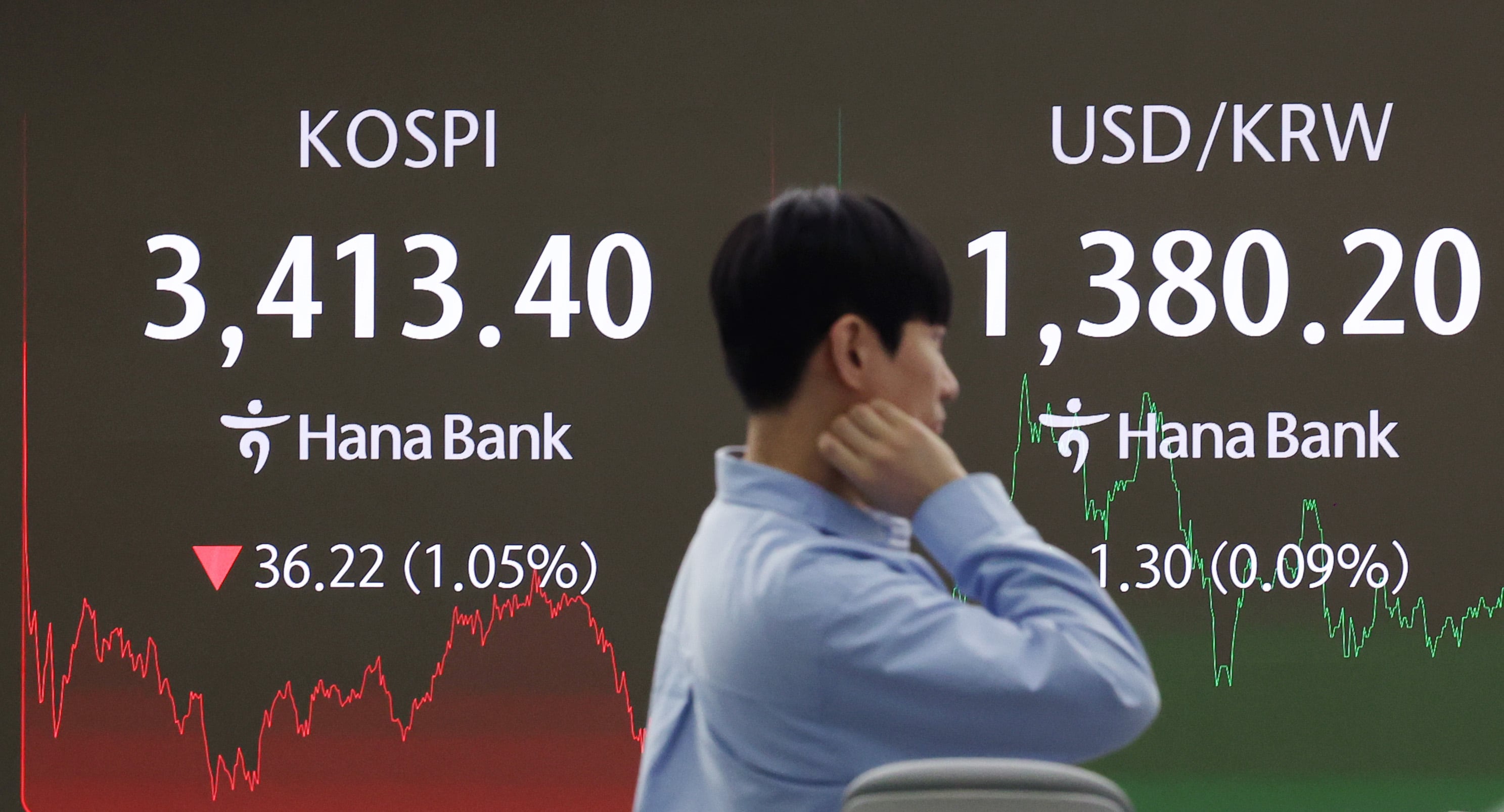
“How high do you think Samsung Electronics will go? Last year, I got greedy at 90,000 won and couldn’t sell, so I’ve been suffering ever since. Will it reach 90,000 won this time? Should I wait more or sell today?”
Lee Mo, 43 years old, a section chief at a securities firm, received such a call from his 70-year-old mother on the 17th. He responded that since foreigners are actively buying Samsung Electronics, it might be better to wait a bit longer, but his mother seemed eager to sell immediately. This is because her account, which had been deeply in the red due to Samsung Electronics, had just returned to break-even.
A daily cycle continues where individual investors sell (offload) and foreigners buy (absorb). In this rally where the KOSPI has set new all-time highs, individuals have been selling record amounts every day the market rises. From early June, when the new government took office, until the 17th of this month, individual net selling (selling more than buying) amounted to approximately 18 trillion Korean won. Particularly since this month, when the index broke through the ceiling and rose above the 3,400 mark, net selling has surged to 9 trillion Korean won, intensifying the selling pressure. Individual investors, who recorded net selling for 11 consecutive trading days from the 2nd to the 16th of this month, turned to net buying of over 2.5 trillion Korean won on the 17th as the index fell by about 1%. In Yeouido, it is said, “A typical pattern of individual investors is emerging again: selling as soon as they break even when prices rise, and buying when they fall slightly.”
◇Why Are Individual Investors Dumping Stocks?
From the 1st to the 16th of this month, the top individual net-selling stocks were Samsung Electronics (4.5475 trillion Korean won), SK Hynix (2.5208 trillion Korean won), and Hanwha Aerospace (501.4 billion Korean won). During the same period, the top foreign net-buying stocks were also Samsung Electronics (2.7518 trillion Korean won), SK Hynix (2.5682 trillion Korean won), and Hanwha Aerospace (445.6 billion Korean won). The reversal is as identical as a decalcomania.
Even as foreigners shout “Buy Korea” and push the index upward, individuals are fervently “Selling Korea.” This is because many investors were “trapped” at high prices during the pandemic bull market of 2020–2021.
According to the Korea Exchange and the Capital Market Institute, approximately 140 trillion Korean won of individual funds flowed into the domestic stock market during the pandemic, riding low interest rates and liquidity. About half of this has yet to recover its principal, and as it recently started to break even, investors are quickly exiting. The selling volume from individuals is being fully absorbed by foreigners, who continue to drive the index upward. Foreign net buying since the new government took office has reached 14 trillion Korean won.
◇Four Laws of Individual Investor Behavior
Experts believe that in this phase as well, individual investors are likely to end up watching foreigners profit without earning much themselves. The typical investment behavior of individual investors is repeating itself.
Various domestic and international studies have identified similar behavioral biases in individual investors, but South Korea, with its high proportion of direct individual investors, shows these characteristics particularly clearly. An analysis by the Capital Market Institute of daily trading records of 200,000 customers from four major securities firms during the rapid market rise from March to October 2020 revealed four major tendencies among individual investors: ▲buying stocks that have already surged (overconfidence), ▲selling quickly after a small gain or failing to cut losses when prices fall (disposition effect), ▲chasing stocks with extreme returns (preference for lottery-type stocks), and ▲herd trading. Notably, the annual turnover rate (total traded volume divided by listed shares) was 1,600%, overwhelmingly higher than in other countries, and higher turnover correlated with lower returns. This month, as financial, semiconductor, and holding companies (금·반·지) lead the market, individuals are intensively selling these very stocks—the disposition effect at work.
◇Will the Sad History Repeat?
Experts worry that the “sad history” of individual investors’ inevitable losses may repeat. The scenario could unfold as follows: those who were trapped sell once they break even and wait → prices rise further due to foreign-led buying → individuals rush in late, creating a FOMO (fear of missing out) rally → foreigners exit with profits, and individuals absorb the selling pressure at the peak, getting trapped again. As the domestic market continues to surge, weekly net buying of U.S. stocks has dropped to one-fifth of previous levels, while investor deposits, the waiting funds for the domestic market, have swollen to 74.76 trillion Korean won. Kim Joon-seok, a senior researcher at the Capital Market Institute, expressed concern: “Individual investors still trade stocks like gambling, focusing on supply, price, and daily news rather than fundamental company analysis.”
Post a Comment